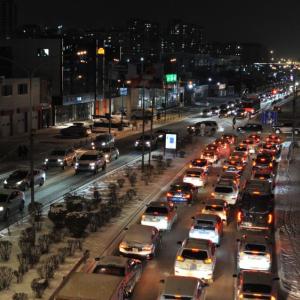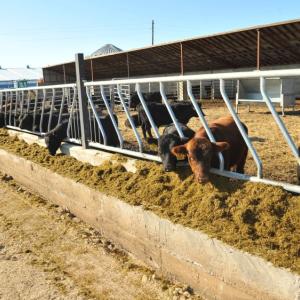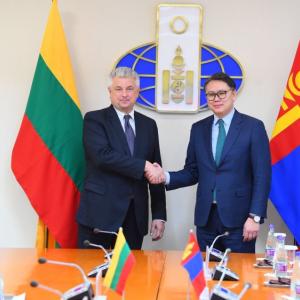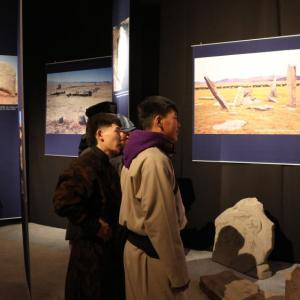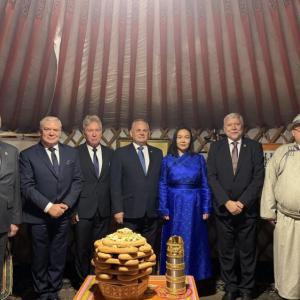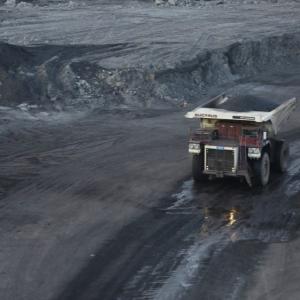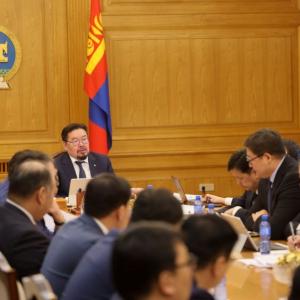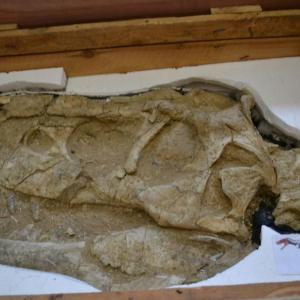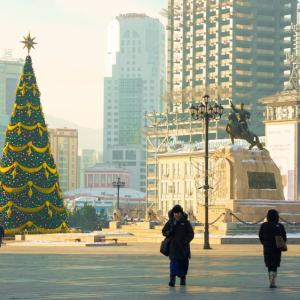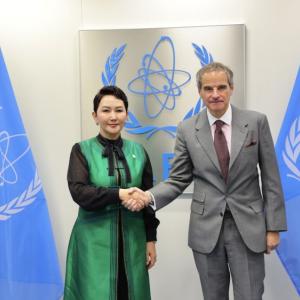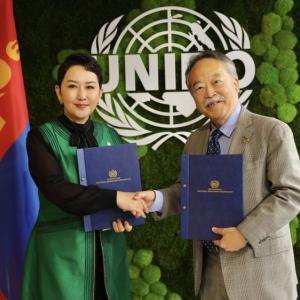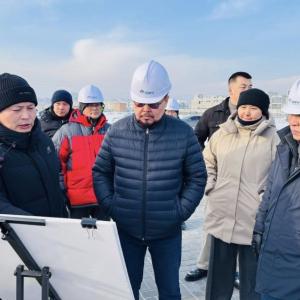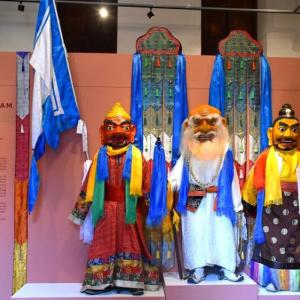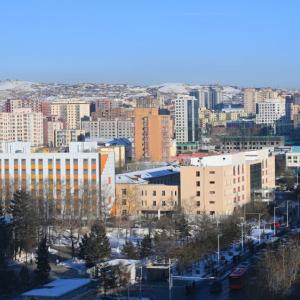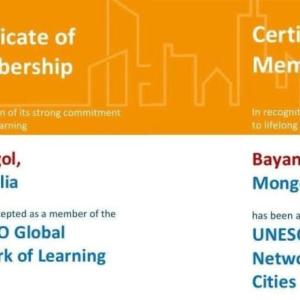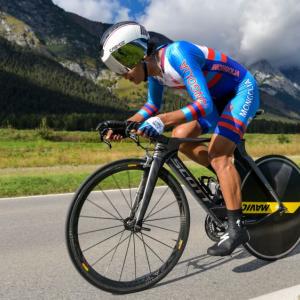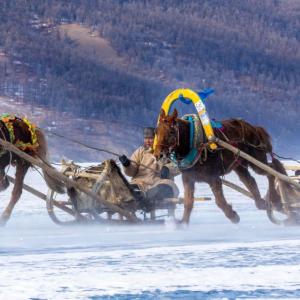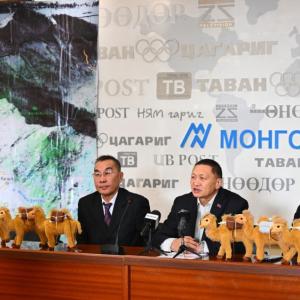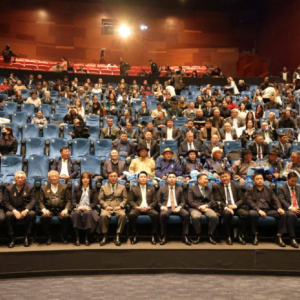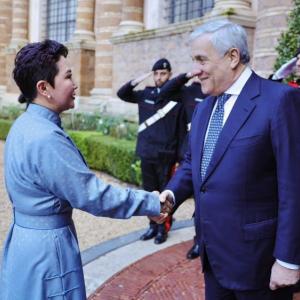B.Gangaamaa – Woman of untiring energy and firm courage
The Mongol MessengerMongolian woman conquers the most challenging mountains in the world
Hailing from Zavkhan Aimag situated in western Mongolia, B.Gangaamaa is a high-spirited yet modest woman. She is not just a woman, but a mountaineer woman. That’s how she defines herself. “Our people call me ‘Mountaineer Gangaamaa’ anyway. It seems the word mountain is always associated with me wherever I go,” she says with a grin on her face. For starters, let us take a look at the brief outcome of mountaineer B.Gangaamaa’s devotion to the mountains.
In 2011, she conquered Mount Everest, the highest peak in Asia and the world on her second attempt to become the first Mongolian woman to step on the tremendous mountain.
In 2012, she successfully climbed Mount Kilimanjaro, the highest peak in Africa on her first attempt.
In 2013, she made it to the crown of the Mount Elbrus in Russia, the highest peak in Europe. The same year, she attempted to conquer the Broad Peak and K-2 in Pakistan but had to cancel the climb due to inevitable reasons.
In 2015, she reached the peak of Mount Denali, the highest mountain in North America on her third attempt.
Her latest success is the conquering Aconcagua the highest peak in South America on January 13 this year. It was her first attempt. Although she pledged to ascend it via the hardest route, the Polish Glacier, she had to take a subsequent route because of harsh weather conditions.
When was your first climb?
When I was 16, I heard that a group of people came from Ulaanbaatar to climb Mount Otgontenger, the second highest peak in Mongolia. /Mount Otgontenger is located in Zavkhan Aimag/ That was 1989. So I went to meet the group leader and asked permission to join them. When they asked if I can climb, I said, “I can”.
Could you have anticipated that climbing would become your passion?
No, I didn’t know. I didn’t know that there were people called mountaineers. I didn’t know such a sport existed. I had no idea such snow-capped mountains existed then. So after my first climb, I dreamed about the colorful tents those Ulaanbaatar climbers had. I started craving to climb again. I kept myself updated about any climbing event nearby. I think fate led me to this path. God may have supported me in what I enjoy doing.
Would you brief us about conquering the highest peak in the world?
Mount Everest is the dream of every mountaineer around the world. That mountain is the highest peak in the world! So naturally my fellow Mongolian mountaineers used to talk about it. We, some young mountaineers in their 20s, used to yearn for even a glance at the glorious peak, let alone conquering it. All of those people have conquered the mountain today. A Mongolian man set foot on Mount Everest for the first time in 2005. So I had an ambition that a Mongolian woman should also conquer the mountain. I led the first women’s expedition in 2006. Even if the team of three women can’t make it to the peak, at least one of us should achieve the goal, I thought. Unfortunately, mountaineer D.Erdenetogtoh, our team member made it closest to the peak. She had to stop her climb just 168 meters from the peak. After that attempt, I decided to try it alone. A solo climb is easier because you just have to take care of yourself and be accountable for yourself. On May 21, 2011, I successfully climbed Mount Everest to become the second Mongolian to conquer the highest peak in the world.
What was on your mind the moment when you were atop Mount Everest?
Nothing. The situation doesn’t allow you to have a lot of thoughts out there. You are just aware that you have done it. You don’t have a chance to express any emotion because you are very tired. But I may note that there was a certain moment when I thought that I should let the world know that a Mongolian, especially a woman has done it. I remember shouting ‘Mongolia!’ just once. I realized the urgent need for preparing sufficient evidence to prove that I reached the peak. Generally, reaching the peak of a mountain is just half the process. Making it to your base camp safely is a successful climb. Ten percent of the climbers who successfully reached the peak of Mount Everest die on the way down. When I came back to the base camp, I was able to rejoice over my success and finally think “I did it!”
Your ascent to Broad Peak and K-2 seems to be quite rueful. What happened there?
It is hard to talk about that attempt because it was the saddest climb of my 26 years experience. Three Iranian mountaineers died on their way down after reaching the the Broad Peak. My friends with whom I laughed and ate together with were lost. So I stopped my climb at 6200 meters to help in the search. They were never found. I climbed K-2 which is the peak next to Broad Peak. As the team was just about to leave the base camp to begin the climb around 11 am, I decided that we should stay a little longer to eat lunch. But past 11, we witnessed a huge avalanche that could have killed us all. Death flashed before my eyes then. I think my country and my people who prayed for my well-being saved me on K-2. Regrettably, a father and son died in that avalanche. After the avalanche, I wanted to proceed, but they told me, “You climbed Broad Peak and K-2. You are the only woman here. The rope to the second camp is broken due to the avalanche. Don’t risk your life.” So, I stopped my climb. Even though I had to return from K-2 after reaching 6300 meters, I came down with a trophy. It was a stone shaped exactly like the territory of Mongolia.
Did you regret having to stop your climb?
No, I never regret a decision. I had seen many deaths and it was rather hard to proceed. No peak is worth a human life, I thought. I wanted to help them in any way I can. The saddest thing is that young men aged 24 or 28 had to die after reaching the peak and they were my friends. As for K-2, all the mountaineers except me were going down. I told myself, “The Mountain is not ready”. I couldn’t possibly have been successful by being so stubborn to proceed alone. Thirty percent of those who conquer K-2 have died during the climb down, reports say.
So why would anyone risk one’s life to conquer a mountain?
I think the mountain is attractive. It is very magnetic that people would even risk their necks to reach the peak or at least attempt. When one stands atop such a high mountain, not only do they conquer the mountain, they also conquer themselves. So I think one’s will to triumph dominates over the fear of death.
How about your latest climb to Aconcagua?
I conquered South America’s highest peak on my second attempt. This climb challenged me hard enough but the mountain received me. I departed Mongolia in December, 2015 and achieved my goal on January, 13. I started the climb with a partner from Hong Kong. The weather was extremely difficult during our climb. We waited for more than a week to be able to climb because of the continuous snow storm and 70-90 km/h winds. Eventually, my partner wanted to leave, but I told her not to. Then I let her stop the climb considering that I was responsible for her life because I was the guide. I stayed and waited for the wind to calm. When it slowed to 50-60 km/h, I determined to try and conquer the peak.
Did you want to stop your climb when your partner did?
Not at all; my determination didn’t waiver. I thought, “Okay, I climbed solo before. Her leave doesn’t change anything; I must continue”. Anyway, this climb had another motive. I wanted to raise the Mongolian flag on the highest peak of South America prior to the Rio-2016 Olympics. It would pave the way for our athletes, I believed.
You have spent 26 years of your life in this sport. What does this sport require from you?
When you talk about mountain climbing, gender doesn’t matter. The destination is the same and there’s no alternate route for female mountaineers to make it easier for them. You need to be very bold and tough to be part of a team. And you should have the strength, solid determination and required capabilities to be able to ask to join them. You can’t delay others. I strive not to be a bad mountaineer and I really don’t want to be a burden. It requires you time and dedication. Mountaineering is an extreme sport. But I won’t deny that there are some people who climb occasionally as a hobby. It is a matter of choice, and I made mine. As I chose to pursue my goals, my personal life was quite unattended.
Let me tell you a sad story. I had a mountaineer friend from Finland whose ambition was to conquer all 14 peaks that are above 8000 meters. When he had conquered 12 peaks, he told me “I want to fulfill my pursuit and reach the last two peaks as soon as possible. I need to take care of business, want to spend more time with my girlfriend and live my life”. The next year, he climbed both mountains. However, he died while he was climbing down the last mountain. It is most regrettable. So if you really pursue this career, one side is always abandoned.
Now that you have conquered five peaks of the Seven Summits, what is your next stop?
A mountaineer never says that he will conquer a mountain. He may only say he would attempt to conquer. Anyone in my position would want to complete the Seven Summits. So my next target is the Carstensz Pyramid in Indonesia. Technically this is the hardest of all seven peaks. I must train harder than ever.
B.Gangaamaa goes to Bayan-Ulgii Aimag in May to work as a guide for mountaineers who climb Mount Khuiten, the highest peak in Mongolia under companies- Mongolia Expeditions and Tours and Altai Expeditions. Not only is this a job, but it is also training for her. She comes down in October. She has been climbing for 26 years since she was 16, working as mountain guide for about 10 years and spending nearly the half a year in the mountains. If this isn’t a perfect example of passion, what would suffice the word, I wonder. Talking about her next climb, she jokes that Mongolian kings have been unsuccessful at ocean battles and failed to conquer states over the sea. But it was now her turn to face the ocean battle as the Carstensz Pyramid is the summit of Oceania. May god protect her as she fights her way to the base camp hiking for 5 days through dense jungles and struggles exceedingly while climbing the rocky and edgy mountain.
Kh.Aminaa
The interview is featured in Mongolia Today Magazine's issue for January-March 2016.
 Ulaanbaatar
Ulaanbaatar






